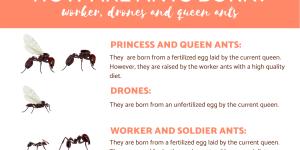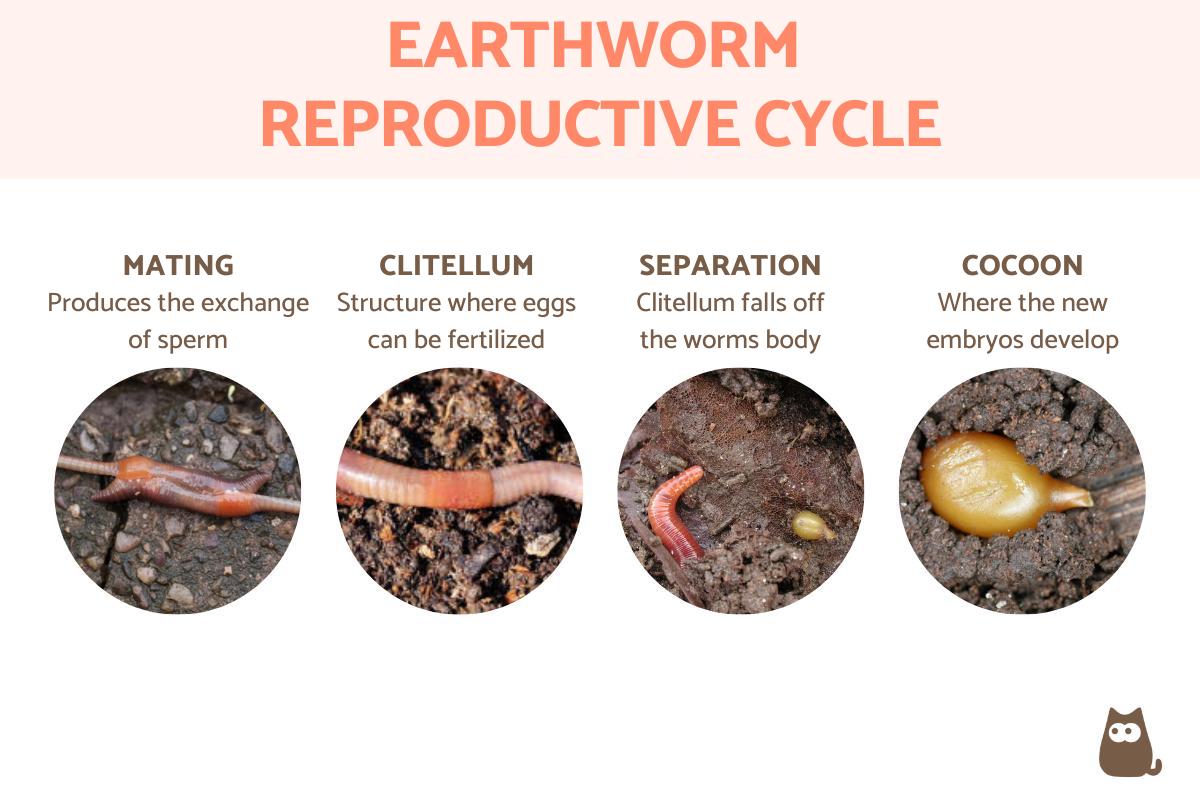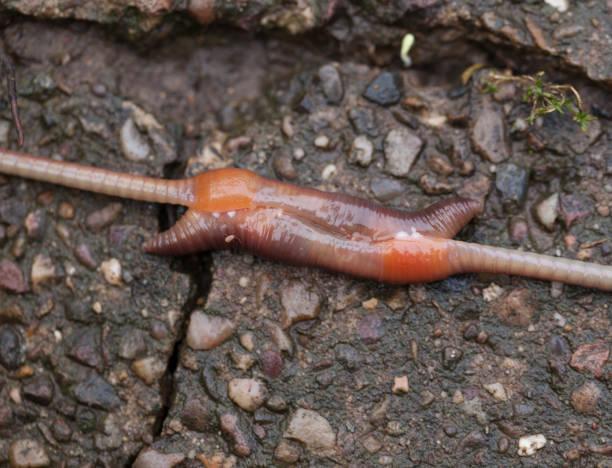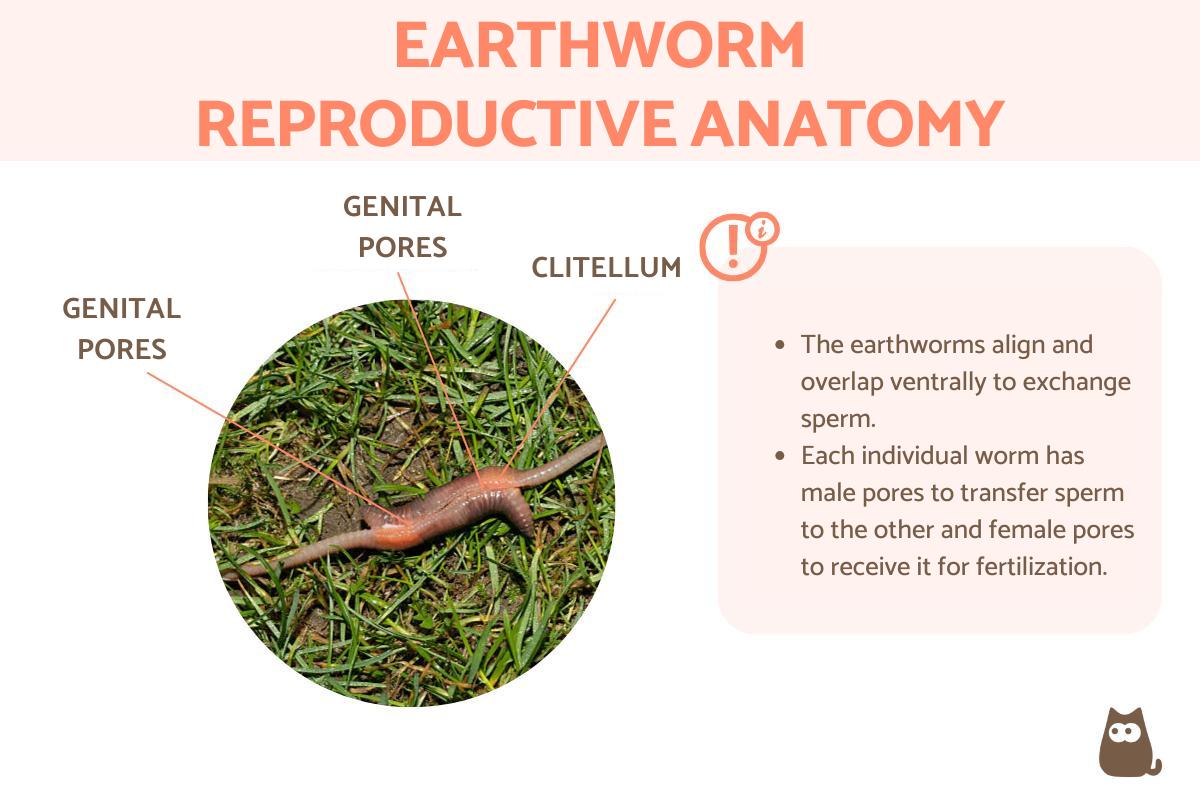How Are Worms Born? - Earthworm Reproduction


Earthworm reproduction has allowed this native European species to have an almost global distribution. The earthworm (Lumbricus terrestris) is an annelid that is known to gardens as a beneficial animal. This is because they help to ensure soil is of a consistently high quality, largely due to their feeding cycle providing nutrients to the substrate. Believed to be native to Europe, these worms now live in almost any mild to temperate climate, with different types of earthworms also living in the tropics. Their ability to breed so prolifically has helped them grow such large populations, as have other factors such as subterranean living.
At AnimalWised, we ask how are worms born? We look at the specifics of earthworm reproduction such as whether they reproduce sexually or asexually. We also provide diagrams of earthworm reproduction to better visualize this process. It is also important to note this is about earthworm reproduction, not other types of worms such as nematodes or cestodes.
Type of worm reproduction
Earthworms live a free life, moving through the soil of various temperate and mild regions. Their habitat is the humid substrate of these regions which are usually rich in organic matter on which they feed. Their food sources include detritus, bacteria, protozoans, rotifers, fungi and other microorganisms. With their elongated and tubular shape, these annelids can measure from a few millimeters to several meters in length, which can be quite surprising in some cases.
Worms are hermaphrodites, meaning they possess both female and male sexual organs. Each type of organ produces eggs or sperm, depending on the case. The sexual structures are found between segments 9 and 15 of the body and are characterized by the following:
- Male sex organs: in the case of male organs, they are made up of testicles that are located inside sacs. Seminal vesicles are attached to the testes that produce and expel sperm through the male pores.
- Female sex organs: with these we find the ovaries and oviducts from which the eggs are produced and released. In this case, this happens through the female pores.
You can see a depiction of earthworm copulation in the picture below and the individual sex organs are shown in the diagram further on in the article.
Learn more about other types of hermaphrodite animals with our related guide.

Do worms reproduce sexually or asexually?
Although worms are hermaphrodites, they cannot self-fertilize. This means they cannot reproduce asexually. Asexual reproduction occurs in many invertebrate species through processes such as binary fission or budding. This is when the animal divides itself or sprouts a new organism from the bud of the previous, respectively.
Instead, earthworms reproduce sexually. This means they require another partner to mate and produce offspring. This occurs through the exchange of sperm, a process performed thanks to structures known as spermathecae. These spermathecae receive and store sperm from another worm during copulation. Since earthworms are hermaphrodites, they can both give and receive sperm during worm copulation.
For all these reasons, worms generally carry out a type of sexual reproduction. There are some rare exceptions. As can occur in nature, some earthworm species can reproduce through a process known as parthenogenesis[1]. This is a process in which embryonic development can occur without the need for fertilization, i.e. the ovum is fertilized without sperm transfer. However, there is little evidence to see this occurring in Lumbricus terrestris.
If you want to know more about how earthworms are classified taxonomically, you can take a look at our article questioning whether worms are insects or amphibians?
When do worms reproduce?
Many animals will have a mating season which only occurs at certain points in the year. During this time, they are able to mate and reproduce sexually. Earthworms do not have a mating season, meaning they can reproduce at any point during the year. This can only occur in the right conditions. While earthworms are largely subterranean and live in burrows underground, mating occurs on the soil surface. It most commonly occurs at night.
Earthworm reproduction explained
In worm reproduction, each earthworm acts as both the male and female during copulation. This means that each worm both gives and receives sperm during earthworm mating. When this occurs, they will both have their eggs fertilized. Reciprocal fertilization can occur thanks to the fact that earthworms are hermaphroditic.
Despite their apparent biological simplicity, worms carry out a complex reproduction process. These hermaphrodite animals participate in copulation, fertilization and reproduction as separate and distinct processes. Below, we explain how worms reproduce step by step (this process is depicted in the diagram above):
- The process begins with chemical signals, which are necessary to find a partner. This is in the form of pheromones which are emitted and detected by both partners, a process similar to the one they use to find microorganisms on which they feed[2].
- When two worms join together, they line up and overlap ventrally in order to exchange sperm. Each individual has two openings or male pores and two structures or receptacles for sperm to receive from the other worm. In this way, both worms receive sperm. The ovaries are responsible for the production of eggs.
- Relatively close to the head, worms have a thickened glandular structure that secretes a slimy sac in which the eggs are stored. This is called the clitellum. The clitellum forms a ring around the worm and is filled with an albuminous fluid.
- After mating, separation and distancing, the worm will work the clitellum down their body. As they do so, it passes over the female pore for the eggs to be released. Once the eggs are collected, the clitellum continues down the body until it passes the male pore (spermatheca) where the spermatozoa are collected. Eventually the earthworm sheds the clitellum from the body.
- Finally, when the worm completely emerges from the ring, a kind of cocoon is formed where all the fertilized eggs are contained. This cocoon is sealed and buried in the ground for the development of the embryos to occur.
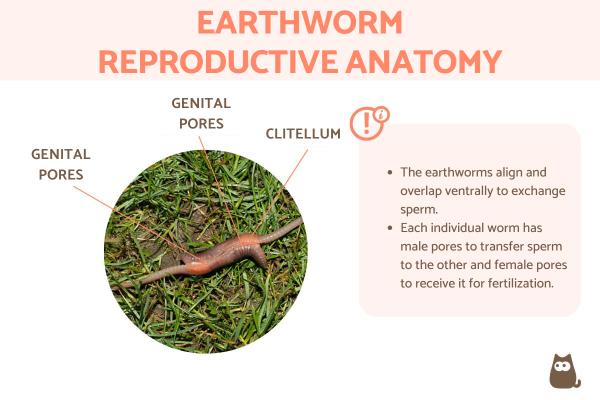
How are baby worms born?
As we have seen, the fertilization of worms is external. After this process, embryonic development begins, which occurs directly. This means that there is no larval formation. Instead, the embryo develops into a fully formed worm before birth. From each cocoon formed by a worm, after a few weeks, between 2 and up to 20 baby worms are born. When they are born, they are able to feed on their own in the soil.
The cocoon formed by the worm functions as a kind of incubator, which provides protection and ideal conditions for the development of the embryos until they become juveniles. Once ready, they emerge so that they are already independent.
Discover more animals from the same phylum with our guide to the different types of annelids.
If you want to read similar articles to How Are Worms Born? - Earthworm Reproduction, we recommend you visit our Facts about the animal kingdom category.
1. Ortíz-Gamino, D., Gregorio, J., Cunha, L., Martínez-Romero, E., Fragoso, C., & Ortíz-Ceballos, Á. I. (2020). Population genetics and diversity structure of an invasive earthworm in tropical and temperate pastures from Veracruz, Mexico. ZooKeys, 941, 49–69.
https://doi.org/10.3897/zookeys.941.49319
2. Zirbes, L., Mescher, M., Vrancken, V., Wathelet, J. P., Verheggen, F. J., Thonart, P., & Haubruge, E. (2011). Earthworms use odor cues to locate and feed on microorganisms in soil. PloS one, 6(7), e21927. https://doi.org/10.1371/journal.pone.0021927
- Cosín, D. J. D., Novo, M., & Fernández, R. (2010). Reproduction of earthworms: sexual selection and parthenogenesis. In Biology of earthworms (pp. 69-86). Berlin, Heidelberg: Springer Berlin Heidelberg.
- The Earthworm Society of Britain (n.d.). Life cycle of an earthworm. Retrieved from: https://www.earthwormsoc.org.uk/lifecycle
- Hickman, C. P. (2006). Comprehensive principles of zoology.

